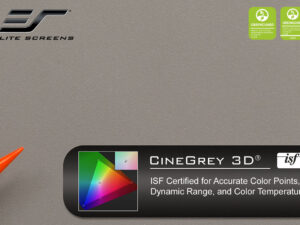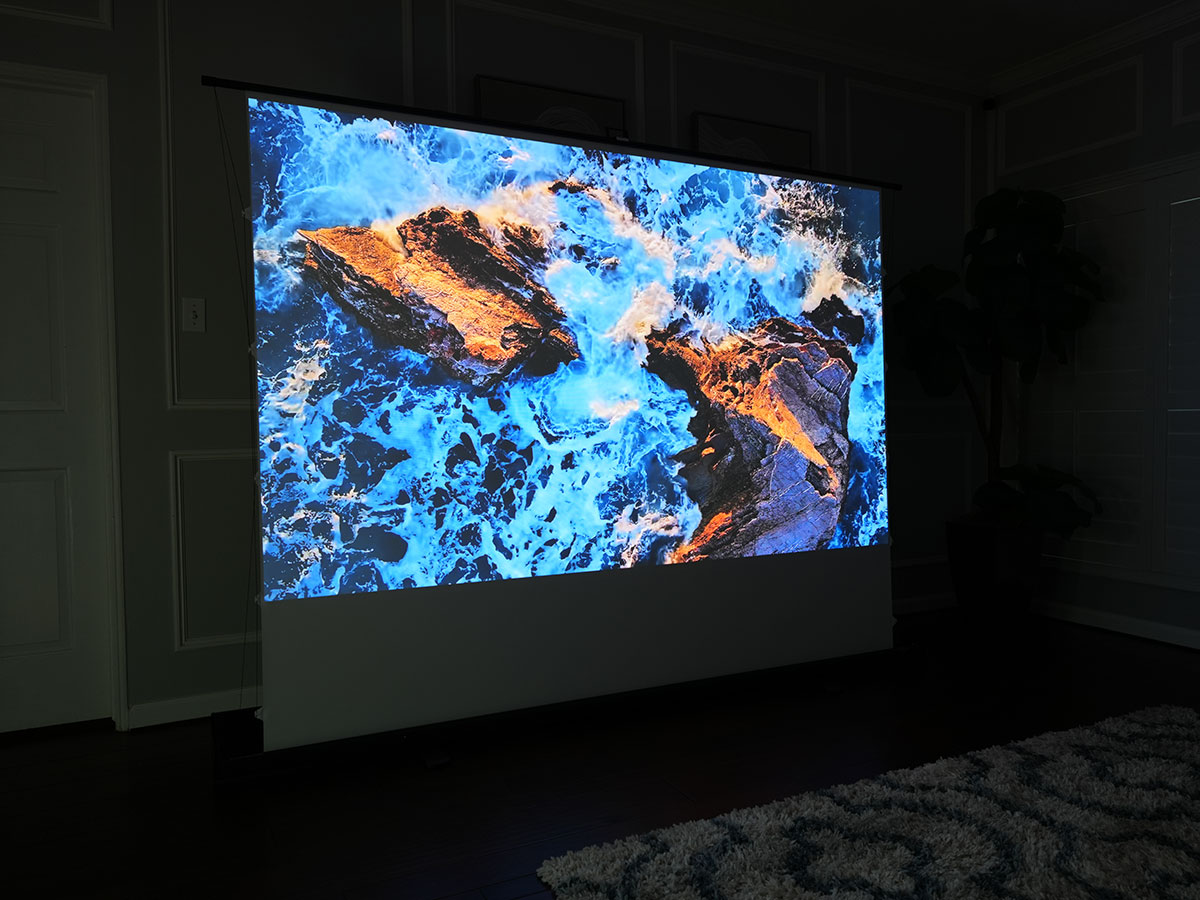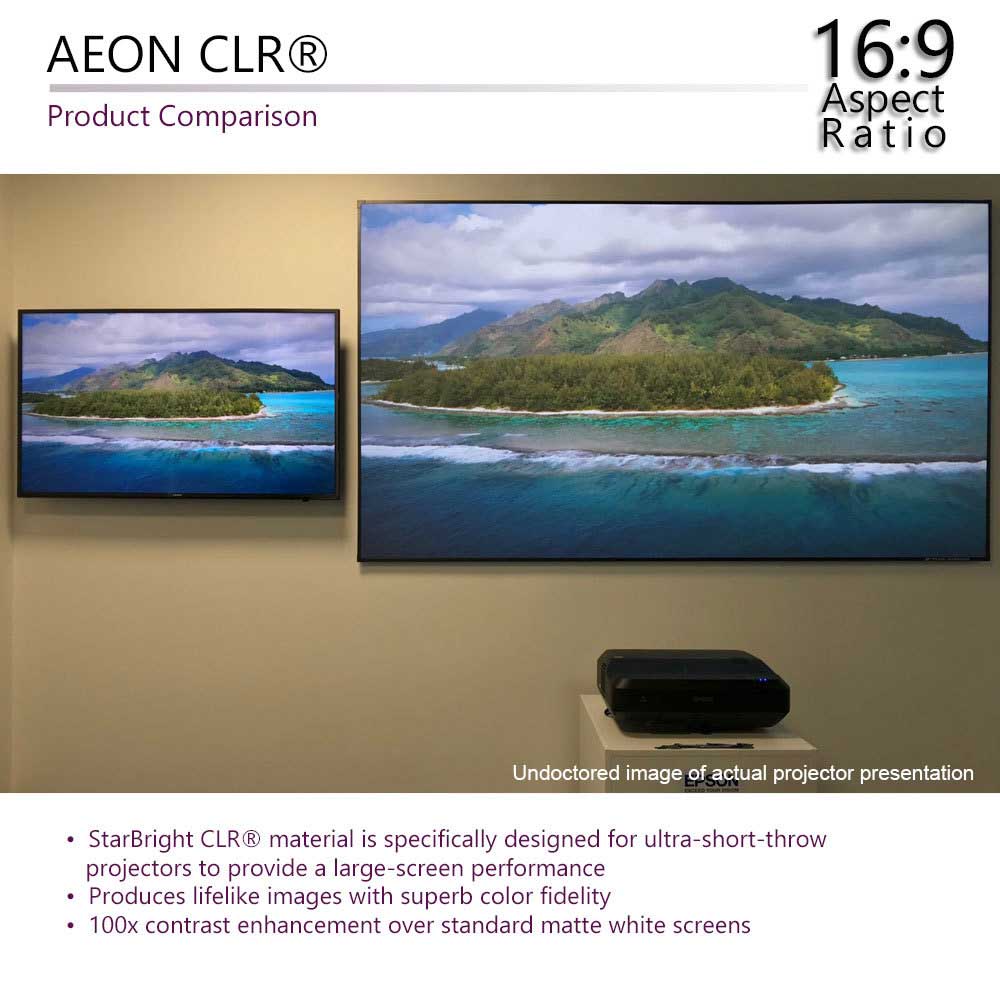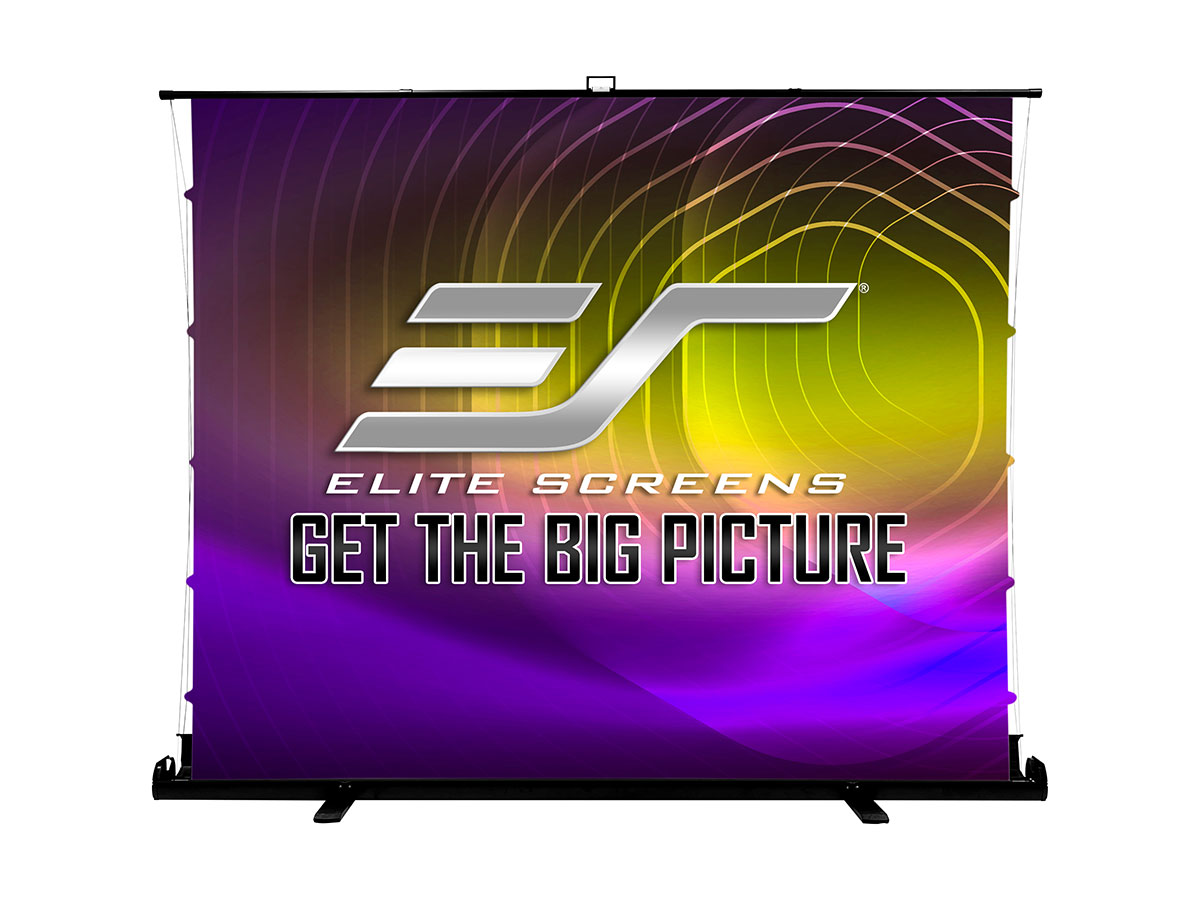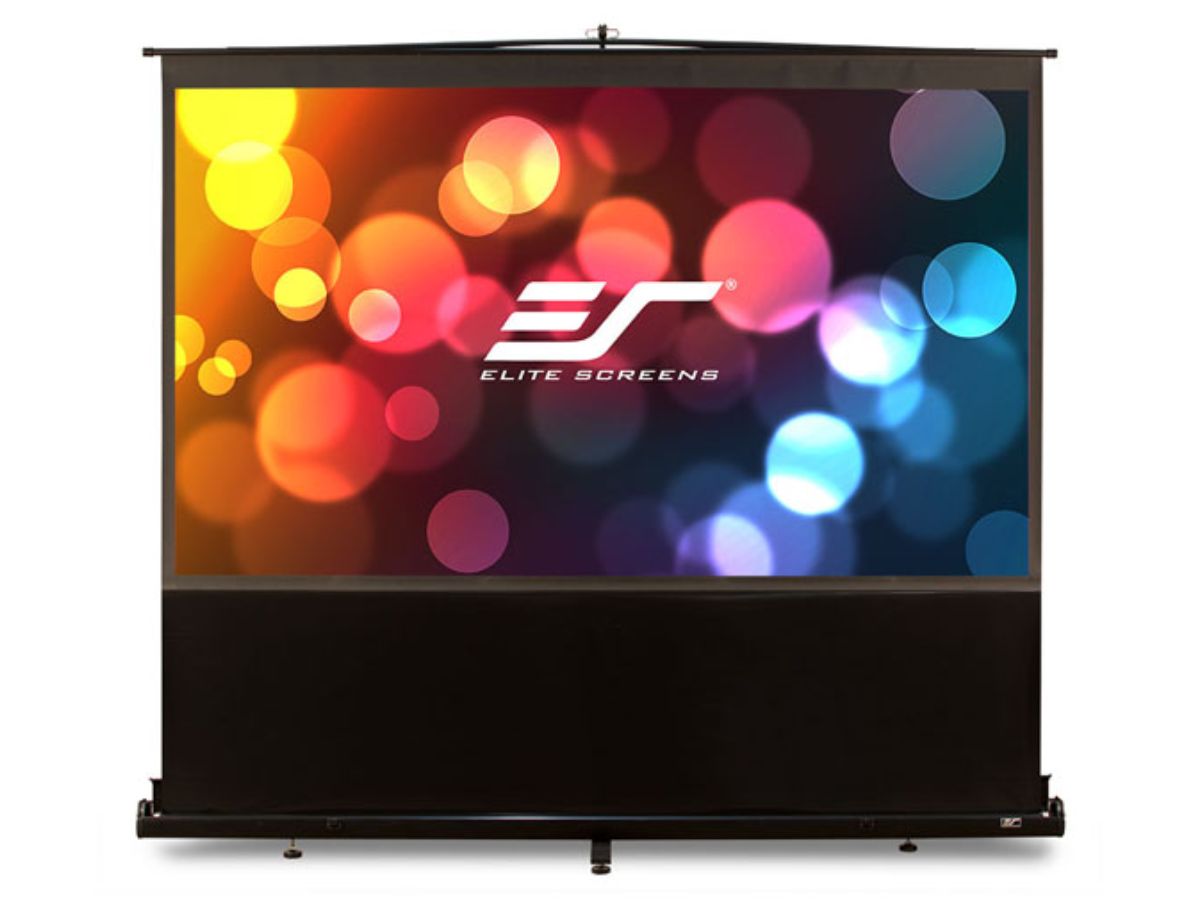Elite Screens CineGrey 3D® -vs- White Screen Comparison
Intro:
With so many options available through online retail sales, Elite Screens has received a lot of requests to compare our standard ambient light rejecting material with a generic matte white projection screen just to show the difference.
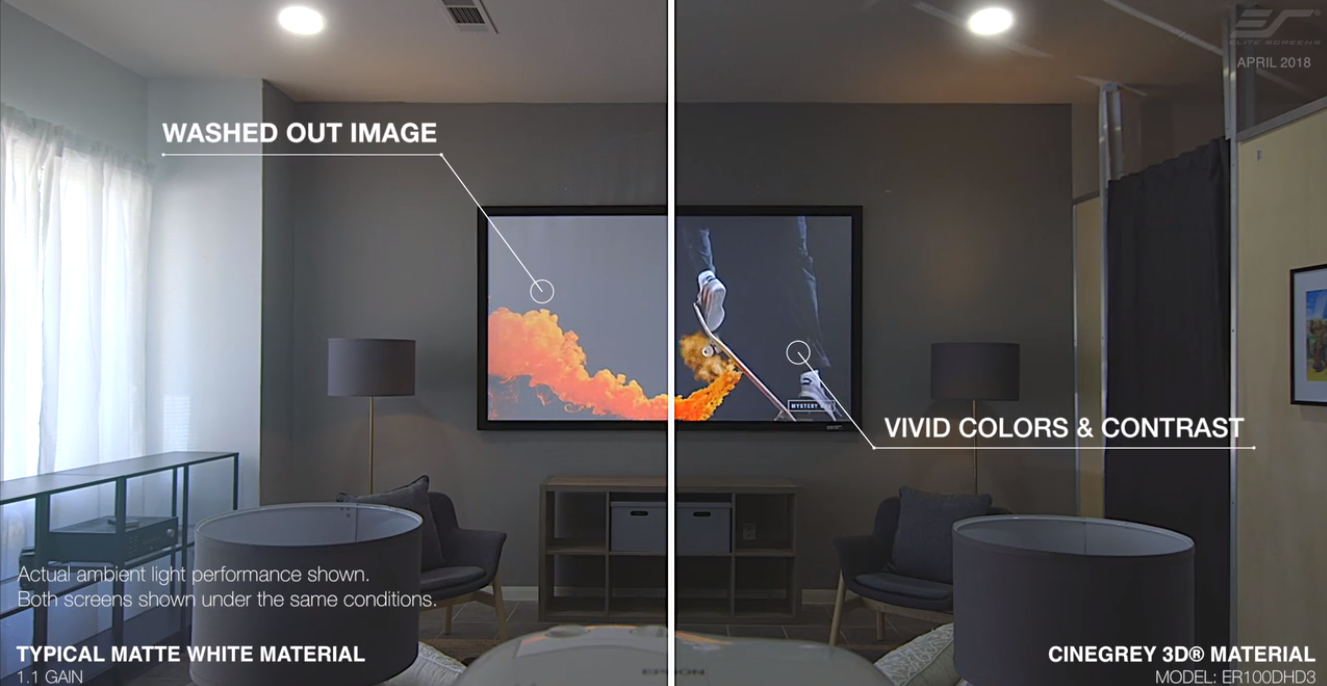
To be fair, most projection screen companies do a great job at making matte white materials. They are relatively inexpensive and easy to install. More importantly, they will present a fairly good projected image as long as you have control over ambient room lighting.
The problem comes when you open the blinds or flip on the light switch. Matte white materials are washed out going from great to milky and unwatchable. The Cinegrey 3D® ambient light rejecting material maintains “TV panel” brightness and clarity regardless if the lights are on or off.
This is a significant advantage since most households are bringing the big screen from the back room to the living room where darkness isn’t done. In a business environment, the dark meeting room is already a long-gone relic of the past.
The answer is to use an Ambient Light Rejecting (ALR) which may also be called a Ceiling Light Rejecting® (CLR®) projector screen. A good example is the Cinegrey3D® material that presents superb picture quality with the lights on or off. In this comparison, the Cinegrey3D® material outperformed white materials in a bright environment and still dominated with its ISF certified performance quality in the dark.
Comparison:
After assembly, a comparison was made between the performance properties of each screen’s surface reflective capabilities.
The Sable Frame Cinegrey3D® features an angular reflective ALR material that mitigates the washout effects of ambient light. At the same time, the thick coating of its reflective compound ensures that equal brightness is uniform across the screen’s surface while promoting neutral color temperature, contrast and black/white dynamic range.
Generic matte white projection screen materials present a good performance in dark rooms but this is where the material’s good performance specs begin and end. As previously mentioned, this is problematic since most homeowners now balk at the concept of having a dark screening room that is limited to one function and not much else. Also, since affordability has made projectors and screens more commonplace in the average home, people like the idea of replacing a large flat-panel TV with a larger than life projection system at a fraction of the cost. The only disqualifier is that the screen must perform with the lights on as well of it’s a non-starter.
Here are the points of comparison that distinguished the Cinegrey3D® (ALR/CLR) material from the common matte white projection screen.
Superior Ceiling & Ambient Light Rejection
ALR/CLR materials exclusively reflect the projector signal into the viewer’s field of vision while diverting ambient light away from the viewer’s line of sight. (See image to the left) It is angular reflective meaning that the material reflects projected content from the mirror opposite “angle of reflection” to the projector’s direct “angle of incidence”. Because of this, it is essential to position your projector so that whether sitting or standing, you will be in the proverbial “sweet spot” to enjoy a bright clear video performance. Because this material has a fairly wide “1/2-gain cone”, the Cinegrey3D® materials accommodate living spaces nicely.
Matte white materials have wide diffusion uniformity. This means that regardless of the angle of incidence that ambient light hits the screen, the viewer will see it. In other words, matte white will reflect the projected content and the washout effects of every other light in the room. While matte white looks good in the dark, it does not perform well in the light.
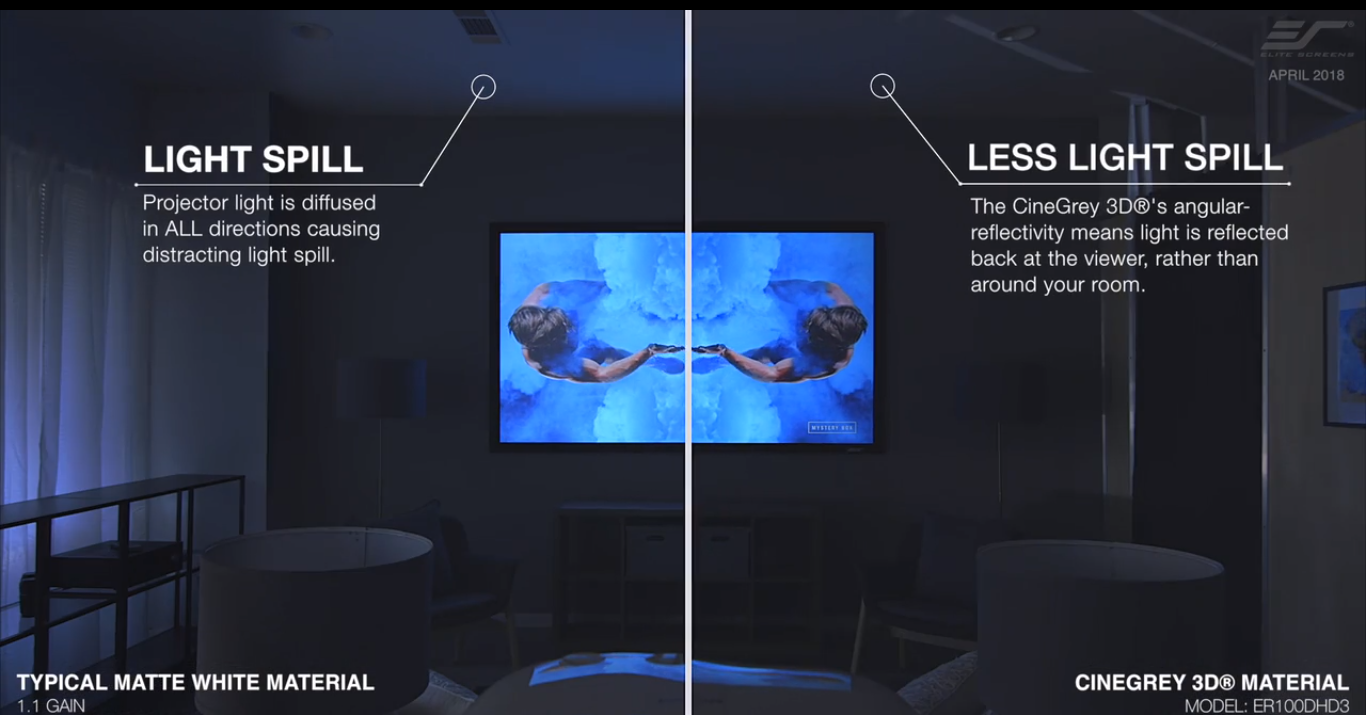
Light Spill
Even in the dark, the wide diffusion uniformity of matte white materials diverts much of the picture brightness away from the viewer’s line of sight. In addition to not maximizing picture brightness, the light reflecting off the walls and ceiling provide a source of ambient light that may further diminish image quality. ALR/CLR materials such as the Cinegrey3D® concentrate that brightness so that viewers reap the full reward. There is also a minimal amount of light spill on the ceiling and walls to distract viewers from enjoying the show. (See image below.)
Superior Picture Performance
In addition to filtering out ambient light, the Cinegrey3D® also minimizes light spill, instead redirecting brightness into the viewer’s field of vision. It also balances color temperature while enhancing color contrast, and black-white dynamic range. All this comes together so that the image is brighter, crisper and so much better in clarity that it is certified by the world-renowned Imaging Science Foundation (ISF).
ISF Certification
There is a tangible performance requirement in our industry that identifies optimal color reproduction, contrast, and black/white dynamic range. The Imaging Science Foundation or “ISF” certifies and endorses products that contribute to systems with “High Fidelity Video” through formal licensing programs. ISF chairs the CTA CEDIA Home Theater Standards development committee that defines image quality parameters designed to meet, or exceed, commercial theater performance with home theater performance. It also serves on the ANSI/INFOCOMM Contrast Ratio committee that defines performance categories for multiple applications that cover virtually all commercial and industrial installations.
The Cinegrey 3D® is certified for its compliance with standards for video performance. Its ability to reproduce a bright, clear, sharp image without visual artifacts is important but in order to be truly ISF compliant, the material must do the following. The Cinegrey 3D® properly displays the full “dark-to-bright” dynamic range of projected content. It is also capable of reproducing accurate color points including the correct white point (D65) or color temperature using a gray step scale test pattern without any visible color shift. In this case the Cinegrey 3D® is ISF Certified. The Other Brand of ALR is not.
Conclusion
Before going for any good deal, always ask if you are truly getting what you pay for. Getting a good price is important but it can be done without sacrificing quality. If done right, a good specialty material can be obtained without getting short changed on quality and performance. The Cinegrey3D® by Elite Screens caters to the requirements of today’s home AV environment at a good price without sacrificing quality.
-DR

